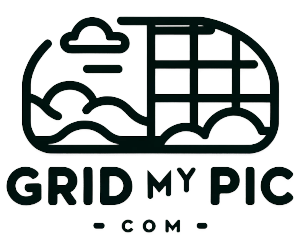From Sketch to Masterpiece: Using the Grid Method for Portrait Painting
Discover the secrets of portrait painting using the grid method. This timeless technique ensures accurate proportions and lifelike details, transforming your sketch into a masterpiece. Unlock valuable tips for realistic portraits and elevate your art today!

From Sketch to Masterpiece: Using the Grid Method for Portrait Painting
When embarking on the journey of portrait painting, achieving accurate proportions and a lifelike appearance is a challenging yet fulfilling endeavor. One of the best-kept secrets in the art world for achieving such precision is the grid method. This time-tested technique is used by artists to maintain accurate proportions in art and ensure that their final piece closely resembles their initial sketch. In this comprehensive guide, we will delve into how to transform a simple sketch into a masterful portrait painting using the grid method, offering realistic portrait tips every step of the way.
Understanding the Grid Method
The grid method is a step-by-step painting technique that involves overlaying a grid on both the reference image and the canvas or drawing surface. This grid helps break down the reference image into smaller, more manageable sections. By focusing on one small section at a time, you can ensure that the proportions in art remain accurate throughout the painting process. This technique is particularly effective for beginners but is also a valuable tool for experienced artists who want to ensure precision.
Materials You Will Need
Before getting started with the grid method, you will need a few basic materials:
- A high-quality reference image
- Graph paper or a ruler to create the grid
- Pencil and eraser
- Canvas or drawing paper
- Paints and brushes if you are painting
- A viewfinder (optional but helpful)
Step-by-Step Instructions to Using the Grid Method
- Select Your Reference Image
Choose a high-quality reference image that has good lighting and clear details. This image will serve as the basis for your portrait painting. Print out the image or have it readily available on a device where you can easily view it. - Create a Grid on the Reference Image
Using graph paper or a ruler, draw a grid over your reference image. The grid should be composed of equally spaced horizontal and vertical lines. The size of the grid squares will depend on the level of detail in your image and your comfort level with the technique. Smaller squares offer more precision but may be more time-consuming. - Transfer the Grid to Your Canvas
Next, replicate the same grid on your canvas or drawing paper. Ensure that the dimensions and number of squares match the grid on your reference image. Lightly draw these lines with a pencil, so they can be easily erased later.
Drawing and Painting Your Portrait
- Sketch the Basic Outlines
Focus on one square at a time, and carefully sketch the lines and shapes that appear in each corresponding square of your reference image onto your canvas. This method ensures that each part of the portrait maintains proper proportions. - Refine the Sketch
Once the basic outlines are in place, refine your sketch by adding details and ensuring the proportions remain accurate. Use your viewfinder to isolate sections and check the likeness of your drawing to the reference. - Begin the Painting Process
Start painting by applying a base layer. Use thin, translucent layers of paint to gradually build up the colors and tones. This allows for better control and blending.

Realistic Portrait Tips
- Focus on the Eyes
The eyes are often the focal point of a portrait. Spend extra time ensuring they are accurately proportioned and detailed. Pay attention to the reflections and subtle color variations within the eyes to make them appear lifelike. - Gradually Build Up the Skin Tones
Mixing and layering different shades helps achieve realistic skin tones. Avoid using flat colors; instead, apply a variety of hues to mimic the natural variations found in skin. - Pay Attention to Light and Shadow
Shadows and highlights are crucial for adding dimension and realism to your portrait. Carefully observe your reference image to understand where the light source is and how it affects the subject’s features.
Final Touches and Detailing
As you progress, continually compare your work to the reference image. Make adjustments as necessary to maintain accuracy. Once the painting is nearly complete, remove any visible grid lines using a soft eraser or by painting over them. Add final touches to enhance details, such as finer hair strands or delicate highlights.
Conclusion
Using the grid method for portrait painting is an excellent way to ensure accuracy and maintain the correct proportions in art. This approach breaks down the intimidating process of creating a lifelike portrait into manageable steps, making it accessible whether you're starting or looking to refine your technique. With practice and patience, you can progress from a simple sketch to a stunning masterpiece.
Remember that every artist has their unique style; while this method provides structure, it’s important to imbue your personal touch into each piece. Happy painting!
